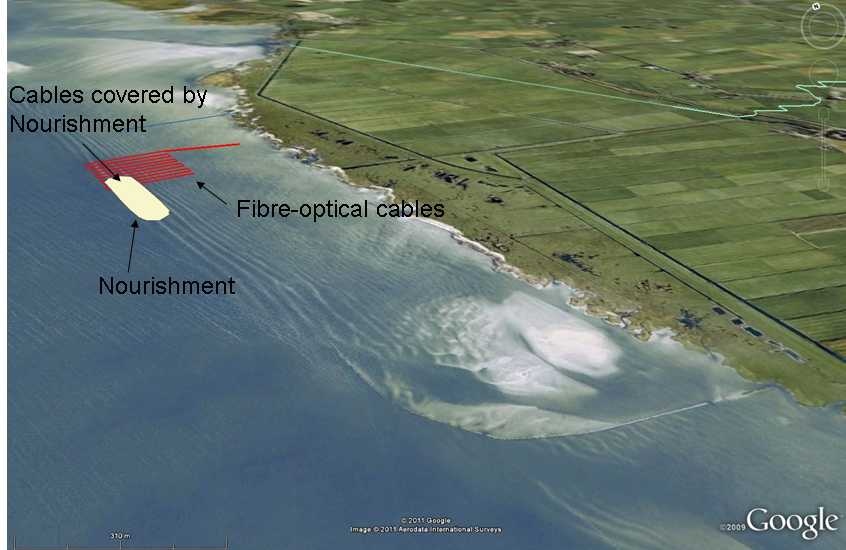About
The use of fibre-optic Distributed Temperature Sensing (DTS) is a promising new technique to measure morphological changes. Fibre-optic distributed temperature sensing uses a single fibre-optical cable as a sensor, and allows measuring temperature with a resolution below 0.1˚C, spatial resolution of less than 1 meter and sub-minute temporal resolution (Hausner et al, 2011). It was originally developed by the oil and gas industries as a borehole logging tool (e.g. Kersey, 2010). Other applications include pipeline monitoring and fire detection and protection. For several years, the technology has been used increasingly to monitor environmental temperatures (Selker et al., 2006; Tyler et al., 2009; Vogt et al., 2010). Here, fibre-optic DTS is applied to monitor morphological changes.
Traditionally, the challenge was to correlate high-resolution hydrodynamic measurements with changes of the bed topography, for data concerning the latter are usually acquired at intervals of several months at least. This measuring interval makes it difficult to pinpoint the hydrodynamic conditions which are driving morphological changes. Using fibre-optic DTS makes it possible to measure morphological changes on an hourly basis, thereby enabling to establish the correlation with hydrodynamic measurements. In addition, real-time monitoring of morphological changes makes it possible to act fast when too much erosion or sedimentation is taking place.
Monitoring morphological changes with fibre-optic DTS works as follows:
With laser technology, a temperature measurement in the cable can be obtained with an accuracy of 0.1˚C and a spatial resolution of 1 m. If a cable is placed in or under sediment (or installed under a nourishment), the difference in heat capacity between water and sediment causes an attenuation of the water temperature signal where the cable is covered by sediment. From these temperature data, the position and ultimately the thickness of the sand cover can be derived. Since measurements are taken on an hourly-day basis, individual events, like storms or floods, can be matched with changes in erosion and sedimentation.

Building with Nature interest
Continuous monitoring of dynamic sedimentary systems leads to a better understanding of these systems. This enables adaptive management and improved formulation of adaptive measures. As a result of the continuous character of DTS-monitoring, it is possible to couple instantaneous hydrodynamic conditions to the morphological development of the area. Applying fibre-optic DTS around hydraulic constructions that suffer from scouring, such as bridge pillars, can delay maintenance until an erosional threshold is exceeded. This can make maintenance more cost-effective. The same holds true for continuously monitoring sedimentation in navigational channels.
In Building with Nature projects, thorough systems knowledge is essential. Detailed coupling of hydrodynamic conditions and sedimentation/ erosion behaviour provides insight into the system’s functioning and its response to the driving factors. This knowledge can be used to validate models, be it conceptual or computational.
The tool is applicable in any project in which sedimentation and/or erosion has to be monitored.
